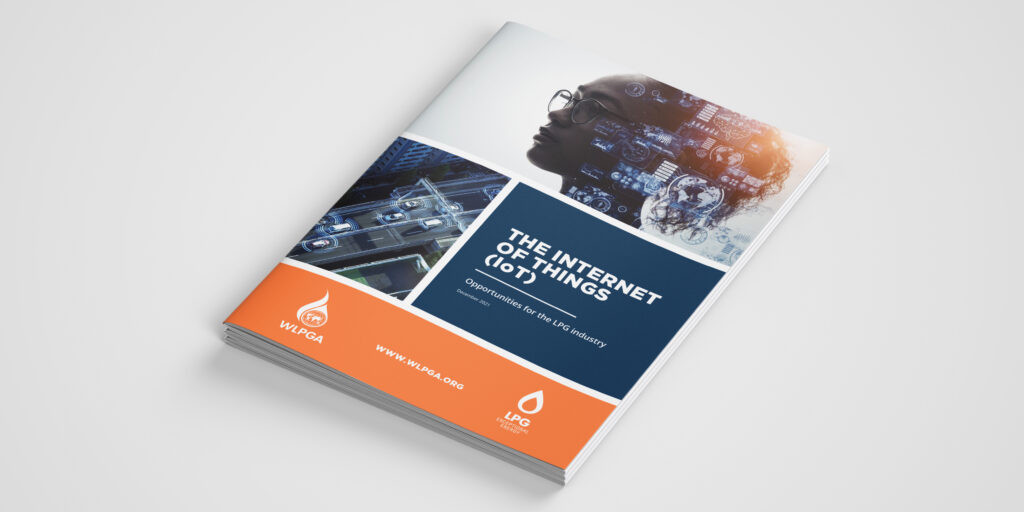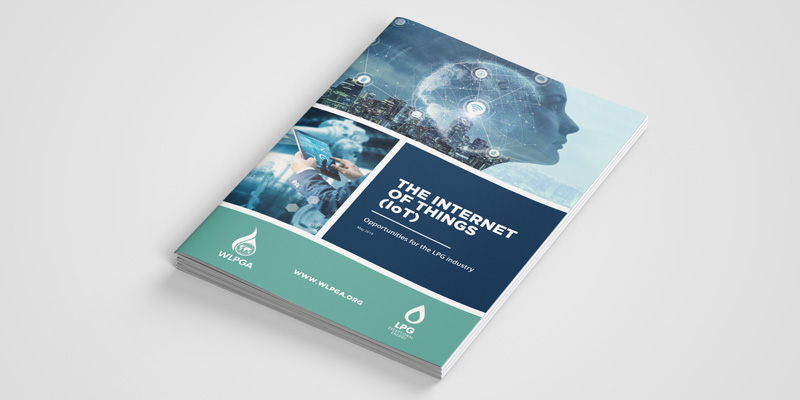Digitalisation
IoT & the LPG Industry
The opportunities for adoption extend right through the business, from the natural gas well head and refinery, through the entire LPG supply and distribution chain to the end user. IoT can help make the LPG industry safer, smarter, more efficient and more accessible.
Access
Three billion people have no access to modern energy. The up-front cost of an LPG cylinder, regulator, hose and appliance makes the use of LPG a financial challenge for many people reliant on traditional fuels for their primary energy. IoT solutions can lower the barrier by leveraging technology.
Operations
For cylinder filling plants, the provision of productivity data to identify sources of improvement, and the application of preventive maintenance with vibration sensors. Telemetry has been used in the LPG industry for many years, mainly for monitoring stocks in the bulk LPG sector.
Cylinder Management
With an estimated two billion in circulation, the LPG cylinder is one of the most capital-intensive items in the LPG business. Cylinder management is not only a safety-critical activity it drives profitability. This data can now not only be stored on the cloud it can also constantly updated to include the date of filling, date issued into the market, maintenance controls, requalification dates etc. It can also be tracked.
Safety
IoT can be applied to manage safety by monitoring information on the fill levels in cylinders, check whether the connections are sound and gas-tight between valve and regulator, check if there are leaks between cylinder and appliance, product temperature etc.
IoT Applications in the LPG Sector
The applications for IoT across the LPG supply and distribution channel can be used very effectively at some of the following critical points. Some examples provided by the working group include:
LPG vessels that are shipping product give real-time positioning information and expected arrival.
Exact time of vessel berthing can be automatically calculated if all ports and vessels interchange data with a common system using IoT.
An integrated system with sensors on pipeline networks, rail tank wagons and bulk LPG road tankers will give the actual picture of product under movement from source to unloading plant; and through the distribution channel to the consumer.
An LPG plant can have IoT connected equipment, which will get precise communication from customers (required product, package, time, etc.) and, based on product and cylinder availability, the production system can be configured.
LPG cylinder trucks can be tracked with GPS monitoring devices to show driving behaviour (speed, location, acceleration, deceleration, direction etc.) and estimated time of delivery to distributors/retailers/ consumers.
LPG cylinders can have RFID/Bar-code based identification giving detailed information regarding due date of testing, company, weight, etc. and the cylinders can be tracked through to the end consumer.
IoT implementation can provide information to end consumers regarding the exact location of product delivery.
Autogas underground storage tanks can be fitted with sensors to communicate with distributors to alert contents to plan optimum delivery loads.
Connecting end-users to LPG distributors, linking demand with supply. Providing more data to drive operational efficiencies across the entire supply chain, i.e. predicting demand using consumption history.
Asset tracking, supply chain optimisation (from filling to delivery), closing the gap with end customer, smart gas metering.
The ‘SmartGas’ distribution model tracks cylinders, and the contents, throughout the journey from the filling plant through the distribution channel to the consumer and back ensuring the integrity of the LPG in the cylinders.
IoT can provide a company with visibility over their entire LPG vehicle fleet. It can provide live data on how much gas is remaining in each cylinder at the customer’s premises. This can improve just-in-time LPG delivery, so the customer never runs out of gas, and is not tempted to seek an illegal refill. It also improves delivery efficiency for LPG distributors. It helps distributors improve their asset throughput.
New business in facility management
Cost optimisation (Capex & Opex)
Moving to online or mobile payments can help reduce instances of cash losses or incorrect bookkeeping

